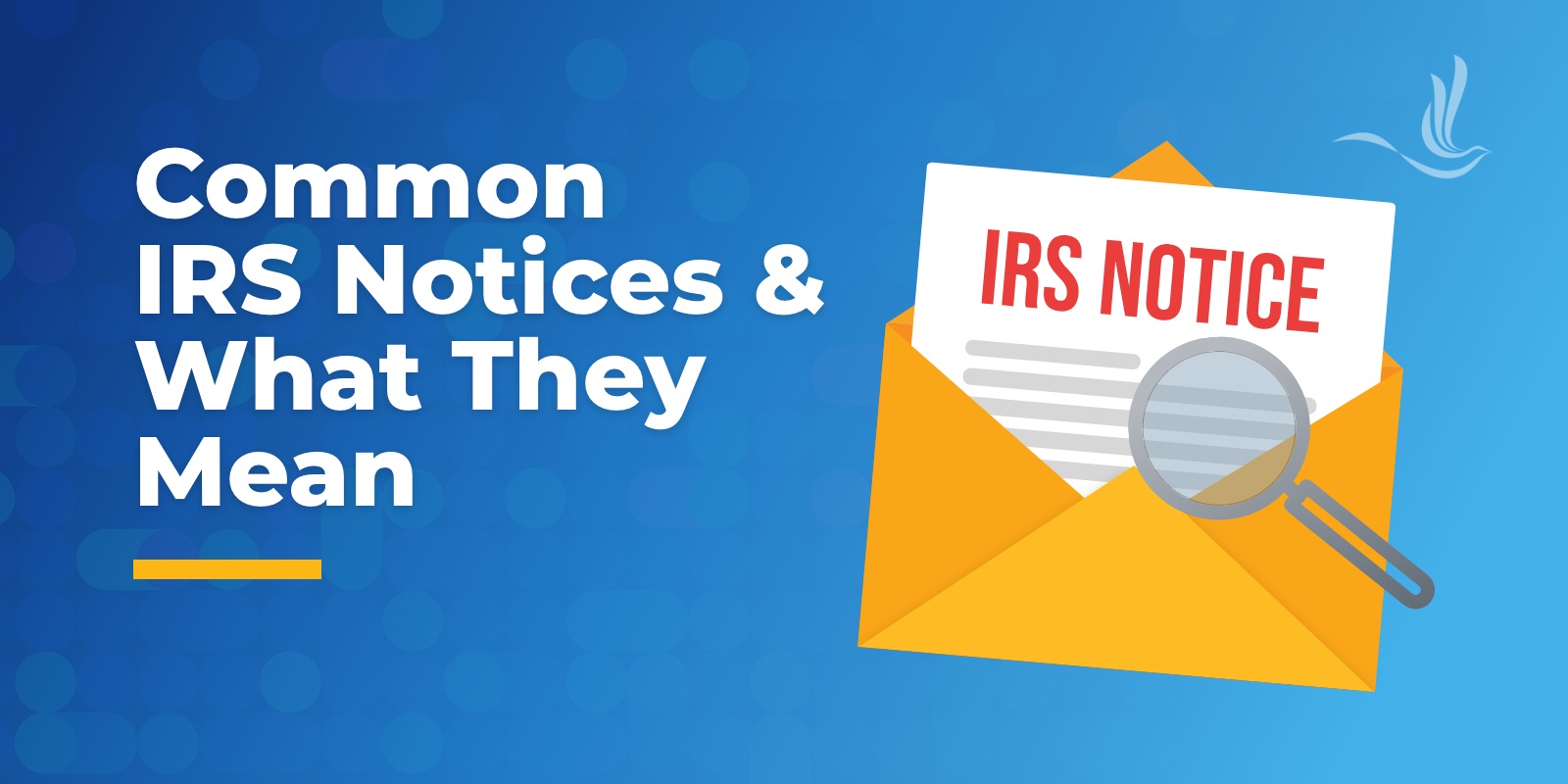
While it is not unusual, getting a notice from the Internal Revenue Service (IRS) can be a stressful event. Every year, the IRS sends notices to millions of Americans. While some of these notices can be purely informational, others might call for prompt action. Each IRS notice has a code assigned to it. It’s usually located on the top or bottom right-hand corner of the written notice. Here are some of the most common IRS notices and letters, what they mean, and how to respond.
IRS Notice CP2000
IRS Notice CP2000 is sent to taxpayers when the income or payment information the IRS received from third parties does not match what is reported on the taxpayer’s tax return. This is important because it can result in an increase or decrease in the amount of taxes owed. If you get a CP2000 notice, you should respond as soon as possible. The notice will include a response deadline and directions on how to respond. In general, you have 30 days from the notice’s date to reply.
You have two choices when responding to the notice: accept or deny the suggested changes. You can sign the response form and send it to the IRS along with any additional taxes due if you accept the suggested changes. If you disagree with the changes that have been suggested, you can back up your arguments with evidence and explain why you think the changes are inaccurate. Remember that additional taxes, interest, and penalties may apply if you don’t respond to the CP2000 notice.
IRS Notice CP90
IRS Notice CP90 is a formal notice of the intent to levy along with a notice of your right to an appeal. The IRS will send you one final notice before beginning collection efforts against you. The notice advises the taxpayer that the IRS plans to seize their assets, such as bank accounts, property, wages, and other sources of income, in order to pay the back taxes owed.
It is crucial that you act immediately if you receive a CP90 notice. After receiving the letter, you have 30 days to contact the IRS. You can choose to pay the tax debt in full, set up an installment agreement with the IRS, or request a Collection Due Process (CDP) hearing.
IRS Notice CP523
IRS Notice CP523 is a notification of default on an installment agreement by missing one or more monthly payments. The notice will also warn of a potential seizure of your assets because of your default.
If you receive this notice, you should contact the IRS within 30 days of the date of the notice. You can also restore the installment agreement by making the missed payments, but you may be required to pay a reinstatement fee. If you are unable to make the current payments, you can ask for a modification to the payment plan. This could entail increasing the payment duration or decreasing the monthly payment amount.
IRS Notice CP14
IRS Notice CP14 a letter from the IRS informing you that you have unpaid taxes on your federal income tax return. The notice will include the amount of tax owed, plus any penalties and interest that have accrued. If the details in the notice are accurate, you need to repay the debt as quickly as possible. Instructions on how to make the payment, including online payment choices, payment plans, and other payment methods, will be included in the notice.
You might be able to ask the IRS for a payment plan if you are unable to make the full payment. The notice will outline how to submit a payment plan request. Additionally, you can contest the notice if you think it is incorrect by formally protesting it to the IRS. To substantiate your argument, you must present supporting evidence.
IRS LTR3172
IRS Letter 3172 is a notice of federal tax lien filing (NFTL). The IRS files this public document to inform creditors that the government has a claim to your interests in any current and future property and assets. Although NFTLs are no longer included in credit reports, they may still have an impact on your ability to receive credit if a potential creditor finds out about them from other sources, like public databases.
This letter advises you of your right to appeal the filing of the NFTL. You have 30 days from the letter’s delivery date to ask for a hearing to contest the lien. Alternately, you could also use the “Collections Appeals Program,” which enables you to challenge the lien. Although this approach can be quicker than the Due Process hearing, you are only able to contest the manner of collection rather than the underlying causes of the taxes owing.
What To Do If You Receive an IRS Notice
Receiving an IRS notice or letter in the mail can lead you to scramble in worry. However, the most important thing to do when receiving a notice is to check for its validity. Phony letters and notices are sometimes sent to innocent taxpayers in order to obtain personal information or payments. If you receive a suspicious letter or notice claiming to be from the IRS, you should confirm it is not fraudulent by contacting the IRS directly. If the notice turns out to be credible, you should understand the severity of the situation but also know you have options and you do not have to tackle your tax issues alone. Optima Tax Relief is the nation’s leading tax resolution firm with over a decade of experience helping taxpayers with tough tax situations.
Contact Us Today for a No-Obligation Free Consultation